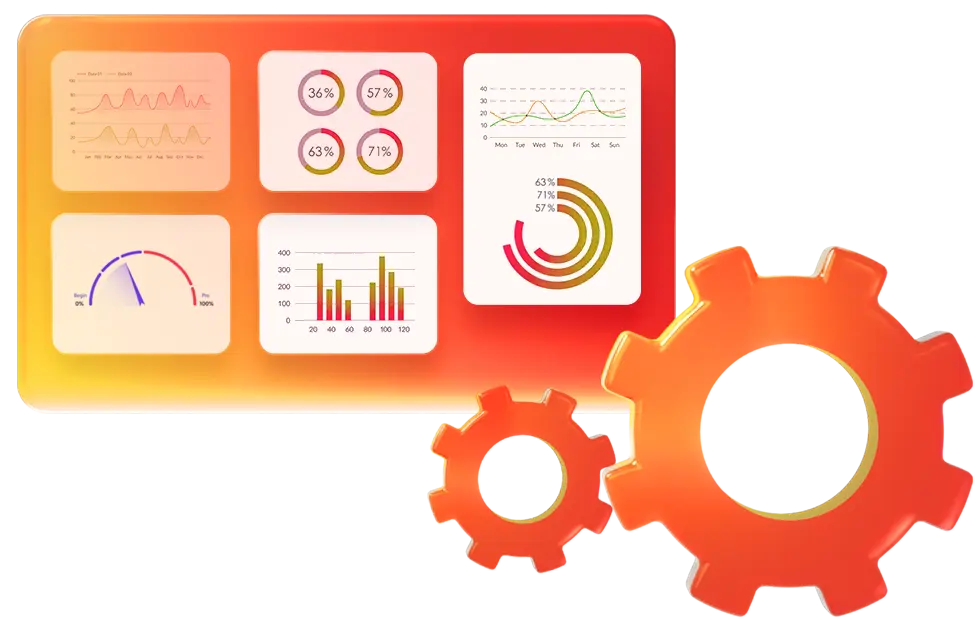
Microsoft BI Consulting, Reporting and Dashboard Services
Knowledge is power. Make informed decisions with BI, reporting, and analytics solutions and services from Tigunia.

Get the Most Out of Your Microsoft Data
Your Microsoft Dynamics software does a great job at collecting valuable data across your operations, but it’s not always easy to consolidate data across multiple systems or build reports in the format you need or want. Instead of wasting valuable time and energy trying to make it work, Tigunia can help! We have a fully stacked business intelligence (BI) department ready to help you better leverage your data with simple, right-size reporting and analytics solutions.

How to Select the Right Dynamics 365 Solutions Partner
Here are some expert tips on how to select the most suitable software solutions partner to implement and support your Dynamics 365 Business Central system. We’ve included everything from sample interview questions to recommendations on what to ask a reference!
Download WhitepaperMake Confident Business Decisions with Total Operational Visibility
The prosperity of your business hinges on the effective collection, processing, and precise interpretation of your data. If error-prone manual tasks, inconsistent reporting, or costly custom reports requiring rework during upgrades are impeding your progress, then it’s time for a change. Whether you need custom BI dashboards or a detailed BI strategy, Tigunia is dedicated to empowering your business with actionable data and the right intelligence tools for faster communication and productivity.
Microsoft Reporting Services:
- Real-time Financial Reporting
- Pre-built Report Templates
- Multi-Company Consolidation
- Flexible Formatting and Design
- Report Management
- Mobile and Web Access
Microsoft BI Services:
- Pre-built Reports, KPIs, and Business Dashboards
- Pre-Built Data Warehouse and Cubes
- Quick BI Customization Options
- Data Management
- Automated Data Migration
World-Class Microsoft BI Reporting Support and Training
Tigunia offers full implementation, training, and support services for preferred Microsoft third-party reporting and BI solutions, including Jet Reports, Jet Analytics, Power BI, and our very own AdaptBC. Hands-on training is available on-site or remote, and is designed to equip your staff with the necessary tools to generate insightful reports, dashboards, and analytics from day one. We also offer ad hoc report training and writing as well as ongoing report support.
Jet Reports
Make financial and operational reporting easy with a proven reporting solution inside of Excel.
Power BI
Tap into your data with powerful Microsoft BI dashboards and stunning data visualizations.
Jet Analytics
Automate reporting and turn data into insight with a robust BI and data warehousing solution built specifically for Microsoft Dynamics ERP.
Power Platform
Microsoft 365, Dynamics 365, Azure, and hundreds of other apps to build end-to-end business solutions.
Transform Your Microsoft Dynamics Data into Impactful Results
Many people spend too much time and money trying to get the reports and dashboards they need in Business Central or NAV, without ever succeeding. With help from our highly experienced team of data management, BI, and reporting consultants, we have the knowledge you need to make improvements to your systems and use your data proactively – starting today when you need it most.

Contact Our Reporting & BI Experts
Hosting your D365 SCM (F&O) infrastructure in a private data center with Tigunia is a strategic decision that should be carefully evaluated based on your specific needs, budget, and long-term IT strategy. Talk to one our experienced hosting advisors today to start discussing your options!